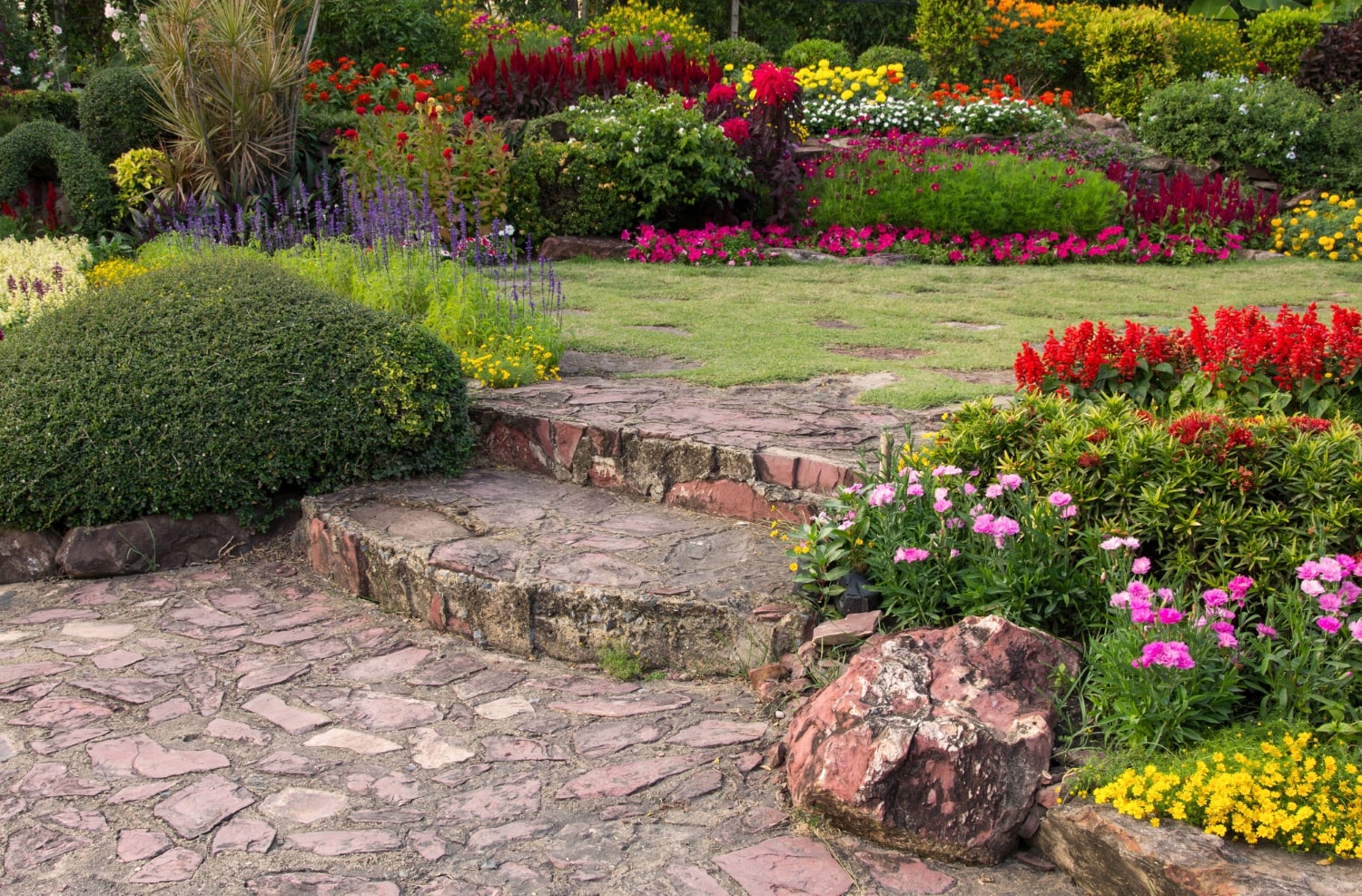
When temperatures rise and plants struggle in the heat, gardeners in the desert southwest look to native plants for color, bloom, and variety in their landscape. It is also a good idea to look for native plants that can tolerate shade and use the northern and eastern ground around your home to highlight these plants.
Use What Water You Have
If your air conditioner drains into a particular spot, use the water. Add mulch to cover the ground and consider adding compost to the area so you can start flowers, such as lavender or Mexican petunia. Make sure that anything you plant close to your home will tolerate being cut back before wildfire season hits. You do not want anything tall near your home when sparks are flying.
To that end, make sure you use the shade that your house provides. If you love an annual garden loaded with flowers, herbs, or veggies, using the shade offered by your home and by nearby trees will give you the chance to keep these plants going when things heat up. Give the plants plenty of room, use mulch that will break down and build up the soil, and consider adding well-cured composted manure in a thin layer.
Use Artificial Turf for a Bit of Lawn
If you have a spot out front that cries for grass, check out different styles of artificial turf in Houston to get a small patch of bright green lawn that takes no mowing. Be aware that even the most durable artificial turf can suffer UV damage over time and may get ragged around the edges.
Do your best to set your artificial turf in a spot where it will not get walked on by barefooted folks, as artificial turf can get extremely hot. However, if left alone as part of a planting bed, a bright stretch of grass can look very nice.
Use Ornamental Grasses and Native Plants
Not everything in your yard has to have bright, showy flowers. Adding ornamental grasses to your yard can actually build up the soil over time in several ways. Ornamental grasses:
- clump over time, providing a windbreak and capturing moisture
- should your region get snow, tall grasses can provide a stop and retain the water
- the turf will break down over the years and provide organic matter
- look lovely in the breeze
Do make sure to keep ornamental grass plantings far from your home. Mow them down before fire season and consider placing the cuttings on another area of your yard where you would like to plant heavy feeders. Your ornamental grass hedge can be turned into a green belt for building up the soil in other areas of your yard.
Focus on Shade
Weeping trees are beautiful in the landscape and can provide a nice shade canopy. Consider adding a Weeping Myall to your yard, or investing in a Texas Olive tree. The Texas Olive will provide shade, flowers and berries or fruits. While these fruits are not edible olives, they can be made into jelly and are very popular with hummingbirds.
As with any fruiting tree, you will need to be ready to clean up any dropped fruit. Rotting fruit on the ground can draw bees, but it can also draw wasps and other unpleasant stingers. Flies are also a risk.
Around Water Features
It may be tempting to put down artificial turf around your pool, but you would do better to use a shade tree that does not shed much debris, such as the Mulga first to avoid excess heat. If you have children who love to splash in the pool, consider adding creeping thyme around the pool. This will be soft enough to walk on, smell terrific when wet, and enjoy the moisture.
Look for a ground cover that will not need to be mowed and that, hopefully, will fill in overtime. If you have a low spot in your yard, consider adding a bridge and a stream of rocks to create the appearance of a pool or stream. Ground cover between these rocks could also be a nice addition.
Gardening in dry, hot climates does not have to be all cactus, though they can be pretty too. Create variety in height and color, and strive to utilize what water and shade you do have with the utmost efficiency.
You may also like
Great Ways to Make Your Home More Eco-Friendly
The Best Trees to Plant for Environmental Benefits
Effective Ways to Bring Sustainable Design Into Your Backyard
A Guide for Homeowners: 3 Easy Ways to Bring the Outdoors Inside
